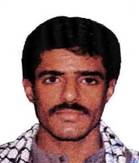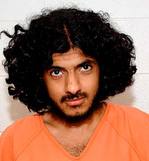Abu al Bara'a Abdul Aziz bin Attash, a son of a notorious al Qaeda family, has been killed by Ethiopian forces in Somalia near the Kenyan border, according to a biography posted on the al Fida' forum. The SITE Intelligence Group has translated the posting, which details Abu al Bara'a's life.
Abu al Bara'a was one of 10 sons in the bin Attash family, at least five of whom served al Qaeda, the Taliban, and their allies. The history of the bin Attash family's jihad is outlined in leaked Joint Task Force-Guantanamo (JTF-GTMO) files, as two of the bin Attash brothers are currently detained at Guantanamo. The two bin Attash brothers in detention are Walid Muhammad Saleh (also known as Khallad) and Hassan Ali, both of whom swore bayat (oath of allegiance) to deceased al Qaeda master Osama bin Laden and were involved in al Qaeda's international terrorist operations.
A third bin Attash brother, Hussam, was "killed in Kabul, [Afghanistan] while working with the Taliban in 1997," according to a leaked JTF-GTMO memo. A fourth brother, Hussayn, was killed in Kandahar, Afghanistan after the Sept. 11, 2001 terrorist attacks.
In addition, the patriarch of the family, Muhammad Saleh bin Attash, was imprisoned in Saudi Arabia. The details of the senior bin Attash's arrest and detention are not included in the leaked JTF-GTMO files. However, it appears that senior al Qaeda detainees in US custody thought he was a close associate of Osama bin Laden.
From Khalden training camp to Somalia
Abu al Bara'a traveled to Afghanistan in 1997 to join his brothers in al Qaeda's training courses. Abu al Bara'a was less than 20 years old at the time, according to the jihadist forum posting translated by SITE. Some of the details of the training are contained in leaked JTF-GTMO files.
Like his brothers Hassam and Hassan Ali, who is held at Guantanamo, Abu al Bara'a was trained at the Khalden camp, which was operated by top al Qaeda operatives Abu Zubaydah and Ibn Sheikh al Libi. Zubaydah is detained at Guantanamo, and al Libi committed suicide in a Libyan prison in 2009. Al Libi seems to have been an especially important figure for the bin Attash family. While in custody, according to a JTF-GTMO file, Khallad described al Libi as being "like a father to most of the bin Attash boys" and "very close to their mother."
Hassam requested that Abu al Bara'a and Hassan Ali travel to Afghanistan for the training, so the pair traveled first from Saudi Arabia to Yemen. In Yemen, the two brothers contacted a "mujahideen facilitator" who, in turn, called Abu Zubaydah.
Zubaydah "recommended the two be accepted for participation in Afghan militant operations," one leaked JTF-GTMO memo reads. They then made their way to Pakistan, where they stayed in one of Zubaydah's safe houses. From there, they eventually reached the Khalden training camp. The leaked JTF-GTMO file for Hassan Ali notes that he was trained on "light and heavy weapons, mortars, hand grenades, land mines, and a three to five week general overview of explosives." Since Abu al Bara'a was at Khalden during the same time frame, it is likely that he received the same training.
The two brothers left Khalden several months later, and met up with Khallad and another bin Attash brother in Kabul. Abu al Bara'a and Hassan Ali then left Afghanistan, staying again in one of Zubaydah's safe houses in Pakistan. Zubaydah also provided the pair with plane tickets back to Yemen.
After spending some months in Yemen and Saudi Arabia, Abu al Bara'a and Hassan Ali returned to Afghanistan, where they received additional training at al Qaeda's Jihad Wahl Camp in Khowst. There, according to the JTF-GTMO files, they "attended explosives training for approximately three to five months."
The two eventually joined Khallad as members of Osama bin Laden's security detail.
Walid and Hassan Ali, both of whom compiled extensive terrorist dossiers while working for al Qaeda, would later be captured and turned over to American authorities after the Sept. 11, 2001 terrorist attacks. But Abu al Bara'a subsequently made his way back to Yemen, where he was detained by President Saleh's regime for several years.
After being freed, Abu al Bara'a married and traveled to Somalia. Interestingly, he migrated there along with another jihadist whose family has served al Qaeda, Abu 'Asim al Tabuki Mansour Nasser al Bihani. [See LWJ report, Jihadist releases bio of Yemeni al Qaeda operative killed in Somalia.]
Like Abu al Bara'a, two of al Bihani's brothers are detained at Guantanamo. Al Bihani traveled to Somalia to fight alongside Shabaab, al Qaeda's affiliate in the Horn of Africa. Once in Somalia, al Bihani trained Shabaab's fighters, including Omar Hammami, an American who serves as a Shabaab commander, propagandist, and recruiter. Al Bihani was subsequently killed in a clash with American forces off the coast of Somalia.
The jihadist biography for Abu al Bara'a does not discuss his ties to Al Bihani beyond mentioning the migration from Yemen to Somalia. Nor does it mention Omar Hammami. But it is likely that Abu al Bara'a was well-acquainted with both fighters during his time in Somalia.
Brothers are senior al Qaeda terrorists
Abu al Bara'a was one of the lesser-known bin Attash brothers. It is not immediately clear if he was involved in plotting al Qaeda's international terrorist operations, or if he devoted all of his time to the jihadist insurgencies in Afghanistan and Somalia. Senior al Qaeda operatives typically play both roles, fighting in so-called local insurgencies while also plotting spectacular terrorist attacks. This was the case with both of the bin Attash brothers detained at Guantanamo.
JTF-GTMO deemed both Khallad and Hassan Ali "high" risk detainees who are "likely to pose a threat to the US, its interests, and allies."
Khallad is the more infamous of the two and was interrogated by the CIA after he was detained in April 2003. Khallad was captured alongside Ammar al Baluchi, the nephew of 9/11 mastermind Khalid Sheikh Mohammed. Khallad and al Baluchi were awaiting the delivery of explosives to be used in an attack against American interests in Karachi at the time of their capture, according to a JTF-GTMO file. After being detained by the CIA, Khallad was transferred to Guantanamo and given an internment serial number of 10014.

|
| Khallad bin Attash. |
Khallad was a senior al Qaeda lieutenant, who graduated from waging jihad in Tajikistan and fighting the Northern Alliance alongside the Taliban to involvement in al Qaeda's international terrorist plotting. Khallad was involved in both the USS Cole bombing as well as the Sept. 11 plot. Khallad "arranged for the procurement of explosives used in the bombing of the" Cole, a JTF-GTMO memo notes.
Khallad was also slated to be a "suicide hijacker for the cancelled Southeast Asia portion of the 11 September 2001 attacks." Originally, al Qaeda had plotted to hijack planes on both the East and West Coasts of the United States. But the West Coast portion of the plot was canceled by bin Laden, who wanted to maintain a degree of operational simplicity. Khallad "conducted surveillance of security for US-based air carriers" in preparation for this part of the plot.
After the Sept. 11 attacks, Khallad continued to plan attacks, including the aforementioned operation in Karachi as well as an attack against London's Heathrow International Airport.
But it is likely that Khallad's career would have been cut short had the Yemeni government kept him in custody. Here, the leaked JTF-GTMO file contains intriguing details about al Qaeda's relationship with President Saleh's Yemeni regime.
In the spring of 1999, Khallad was detained by the Saleh's Political Security Organization (PSO) in a jail in Sanaa, Yemen. The PSO has a long history of al Qaeda infiltration and double-dealings when it comes to terrorists. Khallad would later tell US authorities that "he promised to inform PSO director Ghalib al Qamish if he heard that anyone was planning an operation in Yemen." Khallad claimed that he "technically did not lie to Qamish, even though he was planning the USS COLE attack at the time."
Khallad was arrested the same day that Abd al Rahim al Nashiri, the chief architect of the Cole bombing, "had begun transferring explosives from caches to safe houses along the Yemeni coast." Nashiri, who is also detained at Guantanamo, was spooked by Khallad's arrest and fled to Afghanistan, where he informed Osama bin Laden of this turn in events.
After Khallad returned to Afghanistan, he explained to US officials, "he learned that [bin Laden] had sent a letter to the Yemeni government demanding [Khallad's] release in fear that [Khallad] might reveal the existence of the USS Cole plot."
The JTF-GTMO file notes: "Within a short time, [Khallad] was released and within two weeks, he returned to Afghanistan." Later, Abu al Bara'a would also leave a Yemeni prison only to resume his jihadist activities.
Hassan Ali also became involved in plotting terrorist attacks. According to a JTF-GTMO file, Hassan Ali worked for Nashiri in a plot to bomb "US naval ships and US oil tankers in the Strait of Hormuz." This failed plot was financed by Osama bin Laden.
Hassan Ali, who originally traveled to Afghanistan to train alongside his brother, Abu al Bara'a, was captured on Sept. 11, 2002. He was detained during the same raids that netted Ramzi Binalshibh, al Qaeda's point man for the Sept. 11 operation. Hassan Ali was eventually transferred to Guantanamo and given the internment serial number 1456.
The bin Attash family's story reveals just how easily the jihadists within al Qaeda's orbit can move from one terrorist organization to another. The bin Attash brothers have served the Taliban, al Qaeda central, and Shabaab, among other groups.

















